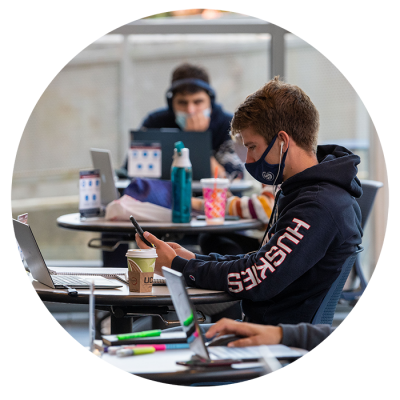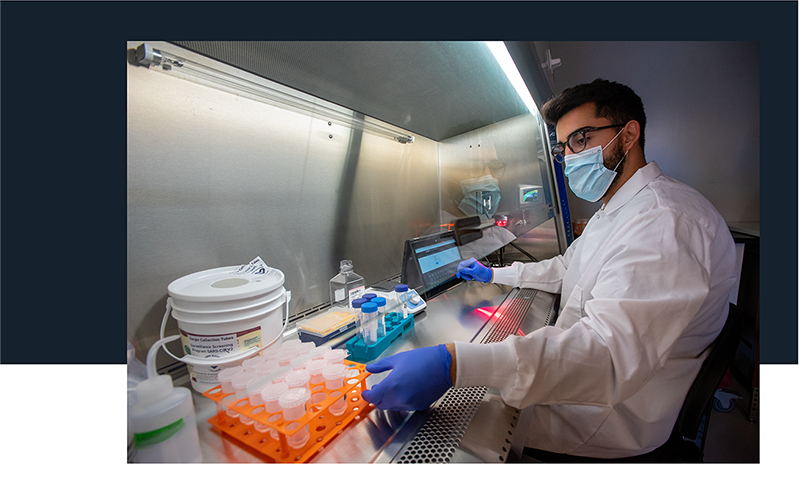
Note: The University conducted Pooled Sample (Gargle) Testing in 2020 and 2021, but as of Fall 2022, this testing is no longer conducted at UConn.
What is pooled testing?
Combining respiratory samples from several people and conducting one laboratory test on the combined pool of samples to detect SARS-CoV-2, the virus that causes COVID-19.
Benefits of Pooled Testing
Performing tests on small groups, or pools, is an effective surveillance screening approach to identify positive cases and contain the spread of COVID, and a critical part of our effort to keep campus safe and open.
![]()
Allows for more people to be screened and more often
![]()
More cost efficient testing this way
![]()
Saves clinical testing supplies for symptomatic and known cases
Pooled Testing
How does it work?
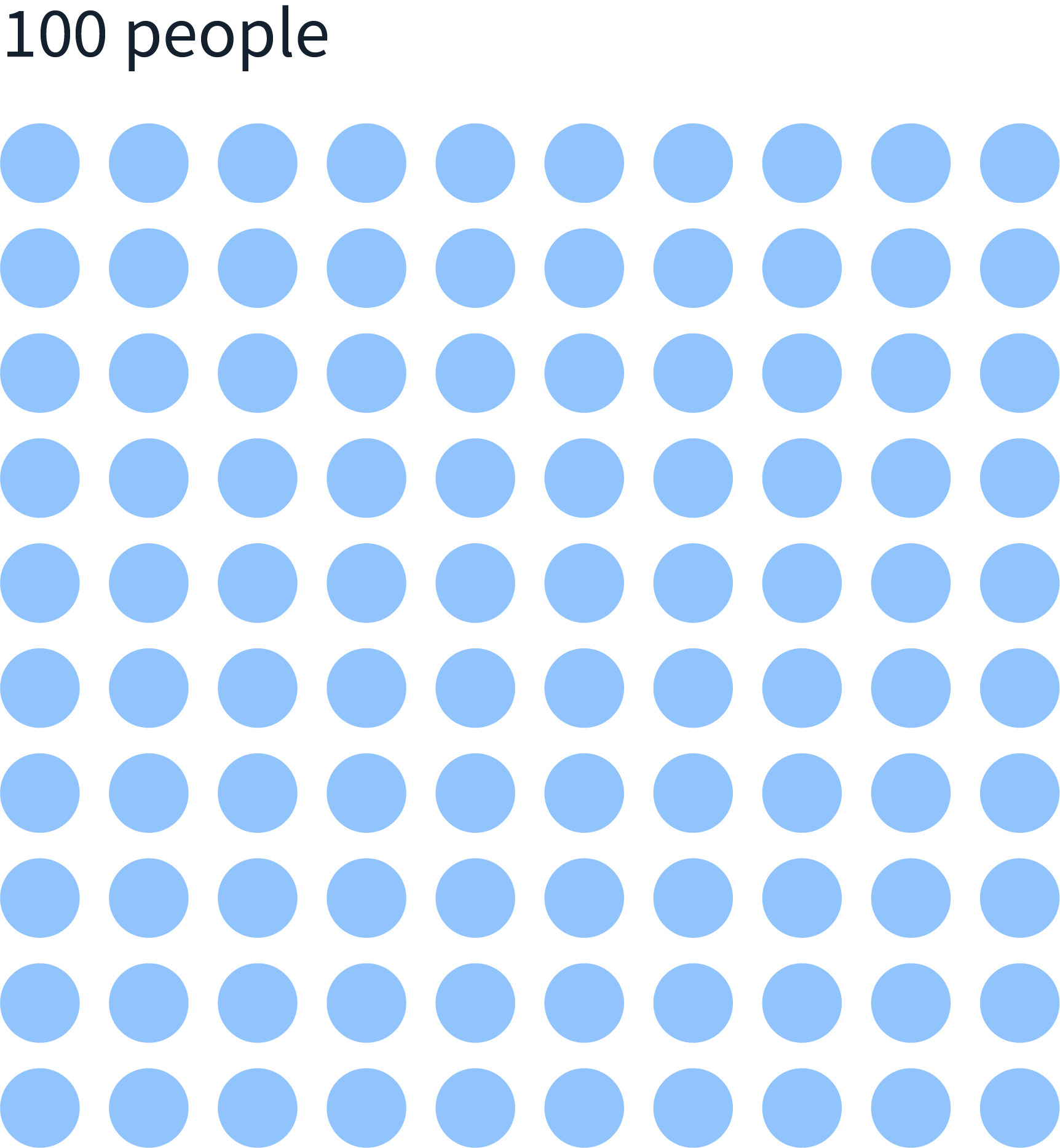
First, 100 people will take the gargle test individually. See below on how to take the test.
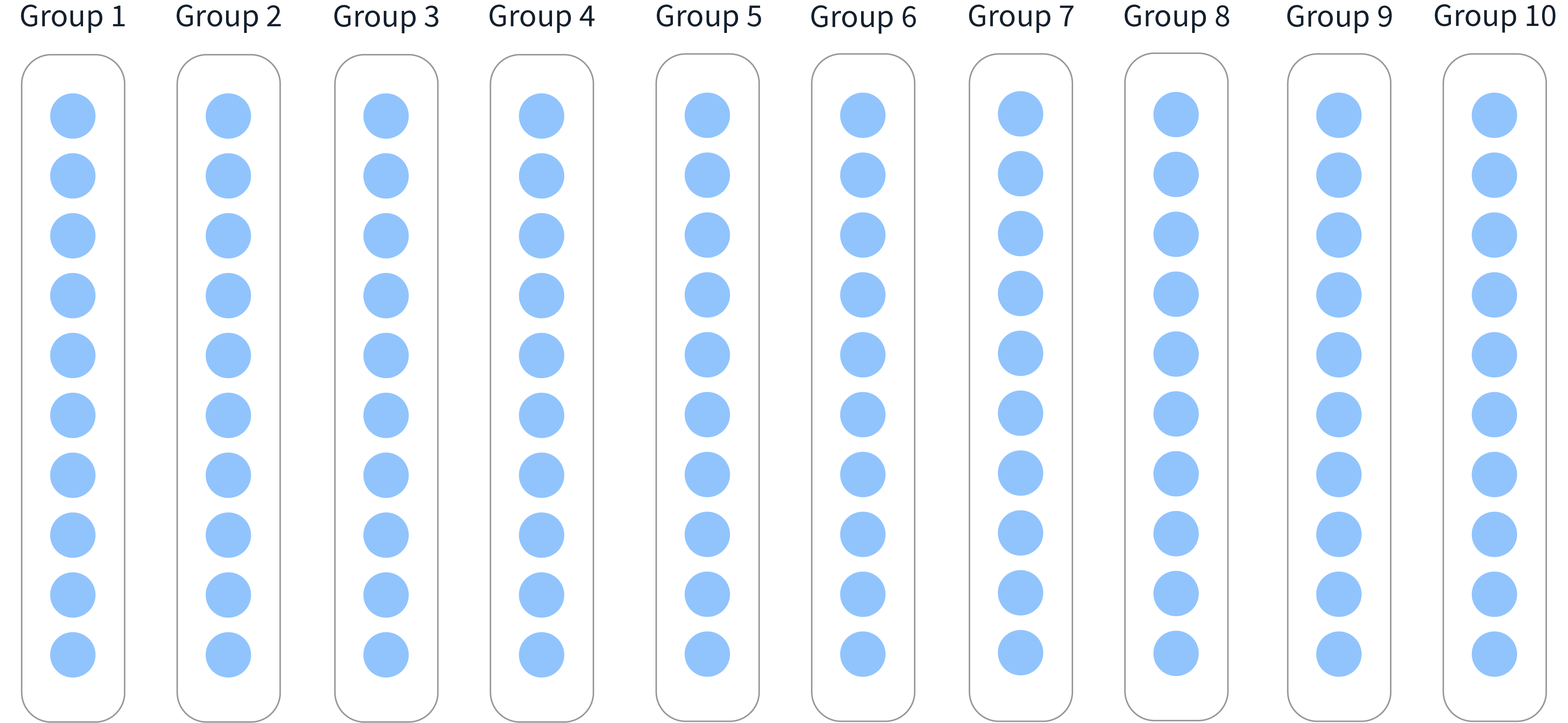
The 100 are then split into pools of 10, where samples are combined within a group as well as are tested as a group.
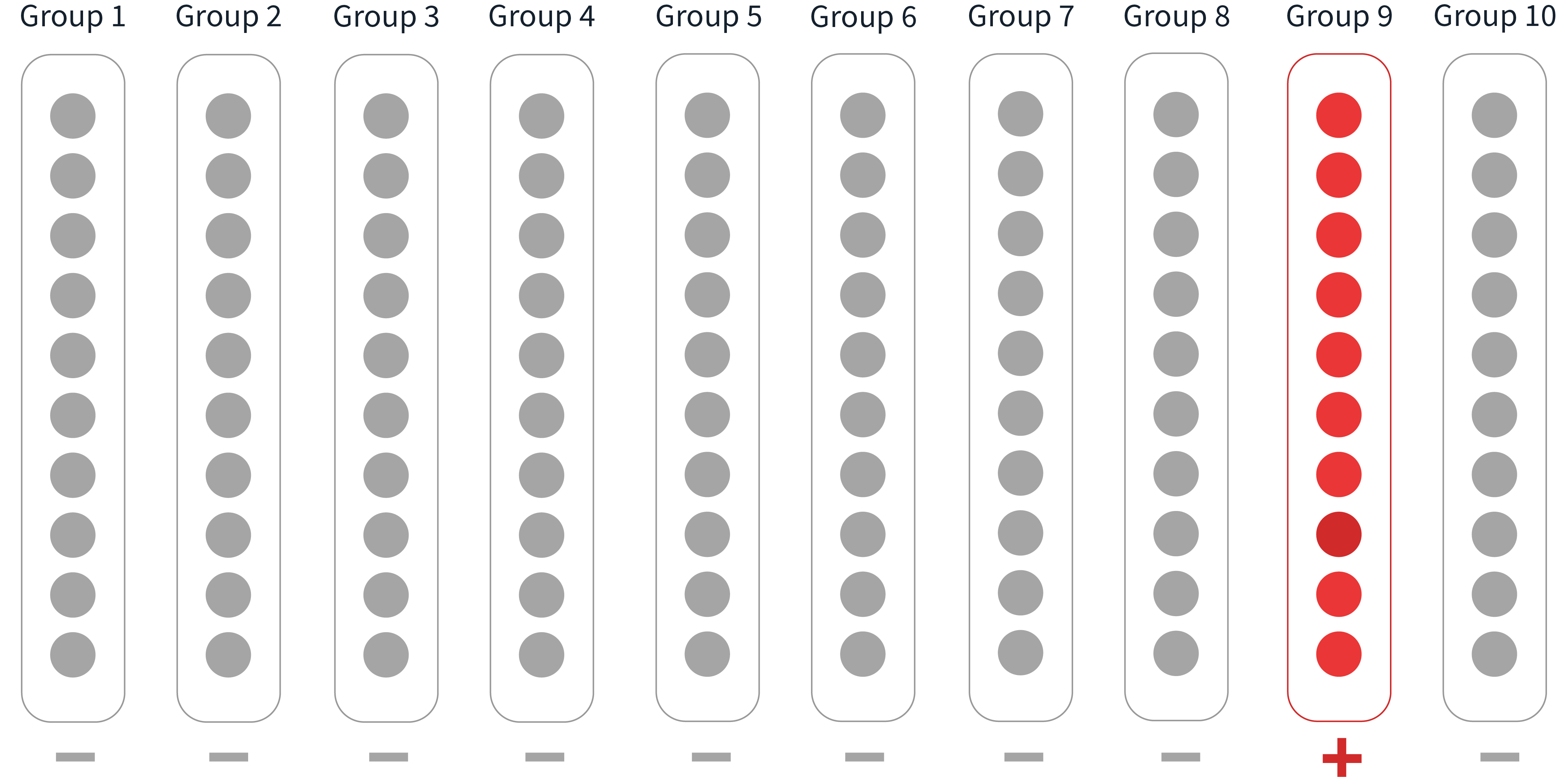
If any pooled group tests positive, we will know that an individual in that group has tested positive.
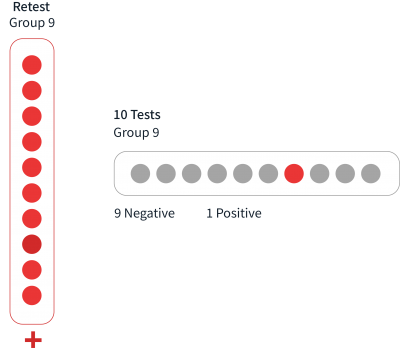
Within the positive pool, we can identify exactly who is positive by giving each of the individual samples within the group a clinical test.
Gargle Testing
Video Demo
Instructions
FAQs for Students/Disclaimers
What is COVID pooled testing and what is its purpose?
Pooled surveillance testing is a method for the university to stay safe and open; by testing pools of individuals from members of the UConn community, we gain a better understanding of who needs to be tested further and how to keep us safe. The university’s pooled screening approach gathers samples from small groups of UConn students and screens these ‘pools’ to determine if SARS-COV2, the virus that leads to COVID, is prevalent.
It’s mostly random, but sometimes we will screen a particular set of students, a floor, or a shared living area more often as we want to identify and support asymptomatic individuals before an outbreak occurs. <<<This will change when spring plan is in place to every resident student will be tested once per week.
Will I get results from this test, will I hear back afterwards?
The results of tests of these pooled samples are only for monitoring the prevalence of SARS-COV2 on campus and are not part of your medical record; we won’t report your results back to you directly.
If any student in the pool is positive, clinical staff from Student Health and Wellness (SHaW) Services will contact you for a follow-up clinical test.
Is the test confidential?
The test is completely confidential and voluntary. As soon as your sample
gets to the lab, it will be combined with other samples; we will never process a sample for a single person nor have any identifying information for the person who gargled into the tube.
Each sample is destroyed immediately after screening for SARS-COV2. No other tests will be performed on the sample.
In order to be able to contact students for further testing, Student Health and Wellness will be the only group in this process that knows the individuals included in the test pool to protect individual identity.
What does the test contain?
The tube contains sterile water. Once the gargle is sent back the lab, we perform a molecular test to detect the virus. The test is highly effective (can we add a stat here as to how effective it is?) TO DO
How are students chosen for testing?
All students will submit one sample a week on their assigned day. Additionally, you may be asked to submit another sample. The additional samples are mostly random, but sometimes we will test a particular set of people more often as we are searching for asymptomatic individuals. Pools are often pulled from the same floor/living area to gain an understanding of specific areas.
